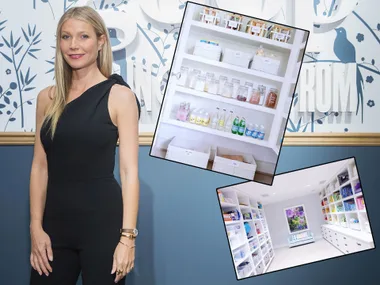Despite a bitterly cold winter lasting much of the year, Danish people are among the happiest in the world, according to the UN’s World Happiness Report 2017.
And now we know their secret: the Danes keep their spirits up with a simple yet life-affirming practice known as hygge.
Loosely translated as “enjoying life’s pleasures”, hygge is about dressing warmly, brewing a cup of tea and snuggling up with a loved one (or pet) and basking in the contentment of being tucked up at home.
Now the rest of the world’s discovering hygge, and the colder months are the ideal time to bring a little hygge into your household.
“Hygge is a new concept here in Australia but its principals are very easy to adopt, and there are plenty of health and wellbeing benefits to be gained,” says Danish-born Charlotte Thaarup, director of The Mindfulness Clinic.
But what does hygge mean?
Pronounced hoo-ga, the expression dates back to the 18th century and is loosely connected to the English word “hug”. It’s also related to the Norwegian term “hugga”, meaning to comfort or console.
Slow down, stress less
Adopting hygge habits gives us time to consciously unwind.
“We’re all so caught up in what we’re doing we’re not actually just ‘being’ – and that’s what hygge helps with: being present and enjoying the simple things in life that make us feel good,” counsellor Marcia Watts says. “Doing more of that helps us to take time back for ourselves and focus on the simple things we enjoy.”
As well as being more relaxed you’ll experience physical benefits, too.
“In many western countries, we tend to live in three emotional states,” Charlotte says. “We’re often in the ‘threat’ state, where our bodies are flooded with adrenaline – such as during high-stress situations like a house move, illness or bereavement; or we’re in the ‘drive’ state, where we’re constantly busy managing the demands of day-to-day life, which can flood our bodies with cortisol.”
An excess of adrenaline and cortisol has been linked to higher blood pressure, inflammation, irritability and a tendency to gain weight.
“We could be living more in the ‘connected and contented’ state, during which the body’s response is to release the feelgood hormone oxytocin, which is the antidote to adrenaline and cortisol,”
Charlotte says. “Hygge encourages more of this very healing hormone.”

Ease into it
Having a hygge moment can be anything from snuggling up by the heater with a hot chocolate, watching Netflix in bed while the cat naps beside you, playing a fun board game with the kids, and hosting a friend for a spot of morning tea.
“Hygge reminds you to enjoy the intimate space of your home, where you can be cosy, warm and protected from the big, scary world out there,” Charlotte says. “It’s not about perfection – you can be in your pyjama bottoms – but as long as you’re feeling secure and loved, you’re doing something hygge.”
You have everything that you need!
A hygge home is a happy home, and the true beauty of it is that bringing a little Danish living into your day doesn’t cost a cent. Raid your cupboards for beloved quilts to drape over the couch, bring out your favourite hand-painted teapot and light that fancy candle you’ve been saving.
“Soft candlelight that creates a warm, feelgood glow is a must,” Charlotte says. “After all, the more comfortable your home, the more hygge it is.”
Take pleasure in gorgeous things you already own – the benefits are backed by science, with a British study finding that looking at beautiful things stimulates the production of dopamine – another happy hormone.
However, if you do want to invest in some new homewares, keep in mind that Scandinavian interiors favour tactile, natural materials, such as timber, leather and fluffy sheepskin throws.
Be in the moment
While experts say everyone can use a little hygge, making comfort a priority is especially suitable for women aged 50-plus.
“The community often underestimates just how much older women are juggling,” Charlotte adds.
“You might still be working and helping out with grandkids, while taking care of your elderly parents. This turns you into an air traffic controller of sorts, too busy managing all these different flight paths to be present in your own life. You might have become unintentionally addicted to being busy or let your identity become confused with what you do, rather than who you are. Hygge is the balm to that.”
Rushing, multi-tasking and eating on the run are not hygge activities.
“It’s not always possible to avoid the disagreeable tasks but hygge teaches you about balance,” Marcia says. “The key to creating a good life is to capture those small but special moments and string them together as memories, like pearls. Hygge helps you do that.”
Best of all, once you’ve ushered in these changes, you’ll be ready to share the heartwarming joy with your family and friends.

Happy hygge essentials:
• Woolly socks and a chunky-knit jumper.
• Candlelight and an open fire or heater.
• Soft rugs on the floor, cushions and throws on the couch.
• A steaming mug of hot tea, coffee or chocolate.
• Homemade stew or soup bubbling on the stove.
• Soft music playing while you chat and linger at the table.
• Close friends and family coming to visit and share a meal.


.jpg?resize=380%2C285)
